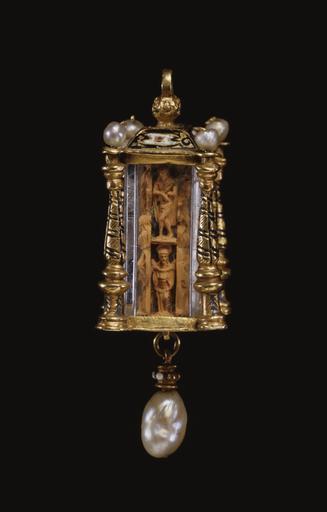MAKE A MEME
View Large Image

| View Original: | Mexican_-_Crucifixion_and_Deposition_-_Walters_61120_-_Side_D.jpg (1151x1800) | |||
| Download: | Original | Medium | Small | Thumb |
| Courtesy of: | commons.wikimedia.org | More Like This | ||
| Keywords: Mexican - Crucifixion and Deposition - Walters 61120 - Side D.jpg The workmanship and materials of the case are European while the iridescent blue-to-emerald green quetzal feathers on the inside are Central American in origin and Mayan as used in a work of art The Crucifixion could have been carved by a native craftsman in colonized Mexico following a European model; but if the wood is boxwood a European wood the artist probably was also The boxwood shrub produces hard fine-grained wood permitting precise detail that holds its shape Indeed the virtuosity needed for such a minute scale is part of the appeal The not-quite-European aesthetic added an exotic quality The tail feathers of the male quetzal called the most spectacular bird in the New World now nearly extinct were incorporated into Christian devotional paintings produced in Central America for the European market and highly prized by the Habsburgs and other collectors A similar pendant belonged to the duke of Bavaria ca 1550 1600 Renaissance boxwood quetzal feathers rock crystal gold enamel pigments pearls cm 4 2 6 accession number 61 120 11827 Henry Walters Baltimore date and mode of acquisition unknown Walters Art Museum Henry Walters Acquired by Henry Walters World of Wonder The Walters Art Gallery Baltimore 1971-1972 Jewelry - Ancient to Modern The Walters Art Gallery Baltimore 1979-1980 place of origin Spain Walters Art Museum license Renaissance applied arts in the Walters Art Museum Jewellery in the Walters Art Museum Mexican feather art Mexico in the 16th century ¢ Media contributed by the Walters Art Museum needs category review Media contributed by the Walters Art Museum needs artist review | ||||